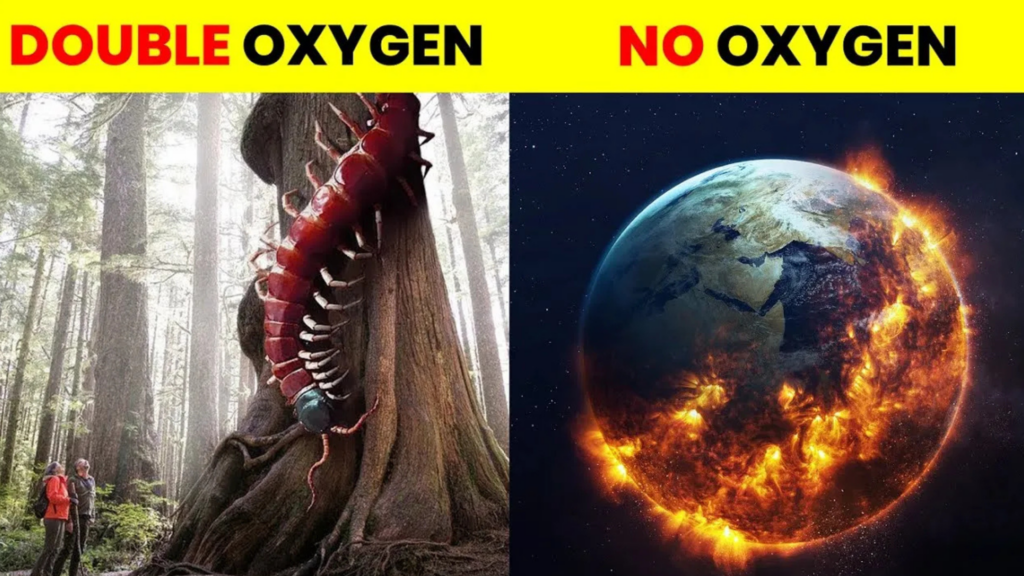
As we all know, oxygen is a vital element that is essential for the survival of many living beings and plants on Earth. Just as food and water are crucial for survival, oxygen is equally important. Currently, oxygen makes up 21% of the Earth’s atmosphere. But What If Oxygen Levels Increased? What would happen if the amount of oxygen suddenly doubled? In this article, we will explore the changes that might occur in nature and among living creatures on Earth.

Millions of years ago, the animals, birds, and trees on Earth were much larger than they are today. Have you ever wondered why they are no longer able to grow to such enormous sizes? The answer lies in the amount of oxygen in the atmosphere. The oxygen levels that existed millions of years ago are no longer present today, which is why living beings cannot grow to the same giant sizes. Oxygen accounts for 98% of the energy our bodies require, while the remaining 2% comes from the food and water we consume. In other words, without oxygen, our bodies would not receive the necessary energy to function. This applies to all living organisms, as oxygen provides the energy they need to survive.

If the amount of oxygen were to double, it would initially have an impact on insects. Unlike mammals, insects do not have lungs. Instead, they breathe through small openings called “Tracheae,” directly absorbing oxygen from the atmosphere. Larger insects, such as spiders, cockroaches, and the Giant Weta, require more oxygen to breathe. With a higher concentration of oxygen in the atmosphere, these insects would inhale more and could grow to larger sizes. This is similar to how ancient creatures thrived in a time when the Earth’s atmosphere contained 30% oxygen, allowing organisms to grow to impressive sizes.

For humans, increased oxygen levels in the atmosphere would make blood circulation more efficient, improve brain capacity, and boost the body’s immunity. With enhanced brain function, a person could become more intelligent and potentially develop stronger physical abilities, possibly even resembling a “superhuman.” However, too much oxygen can have adverse effects. If the body takes in more oxygen than it needs, it could lead to lung damage, impaired vision, and cellular destruction. This condition is known as “oxygen toxicity,” which can be harmful, just as excess of anything can turn beneficial into harmful.

The increase in oxygen would also have significant effects on nature. With more oxygen in the atmosphere, sunlight would penetrate the Earth more effectively. This would make wildfires spread much faster, as oxygen fuels fire. Forests worldwide would experience more rapid destruction in the event of fires.
Historically, Earth’s oxygen levels were once much higher. Approximately 2.5 billion years ago, oxygen levels reached 50%, leading to a mass extinction event, known as the “Great Oxygenation Event.” Afterward, the Earth’s atmosphere stabilized to about 30% oxygen, which allowed organisms to grow in large sizes. Today, oxygen levels are at 21%, which has created the current balance of life on Earth.
So, What If Oxygen Levels Increased? It seems that nature has undergone multiple stages of trial and error to finally create the environment that supports the life we know today. While there are potential benefits to an increase in oxygen, such as larger organisms and enhanced human abilities, there are also risks, including environmental destruction and health hazards.
What are your thoughts on this? Do the potential benefits outweigh the dangers, or should we maintain the current balance of oxygen levels? Share your opinion in the comments!

